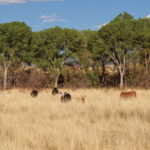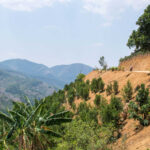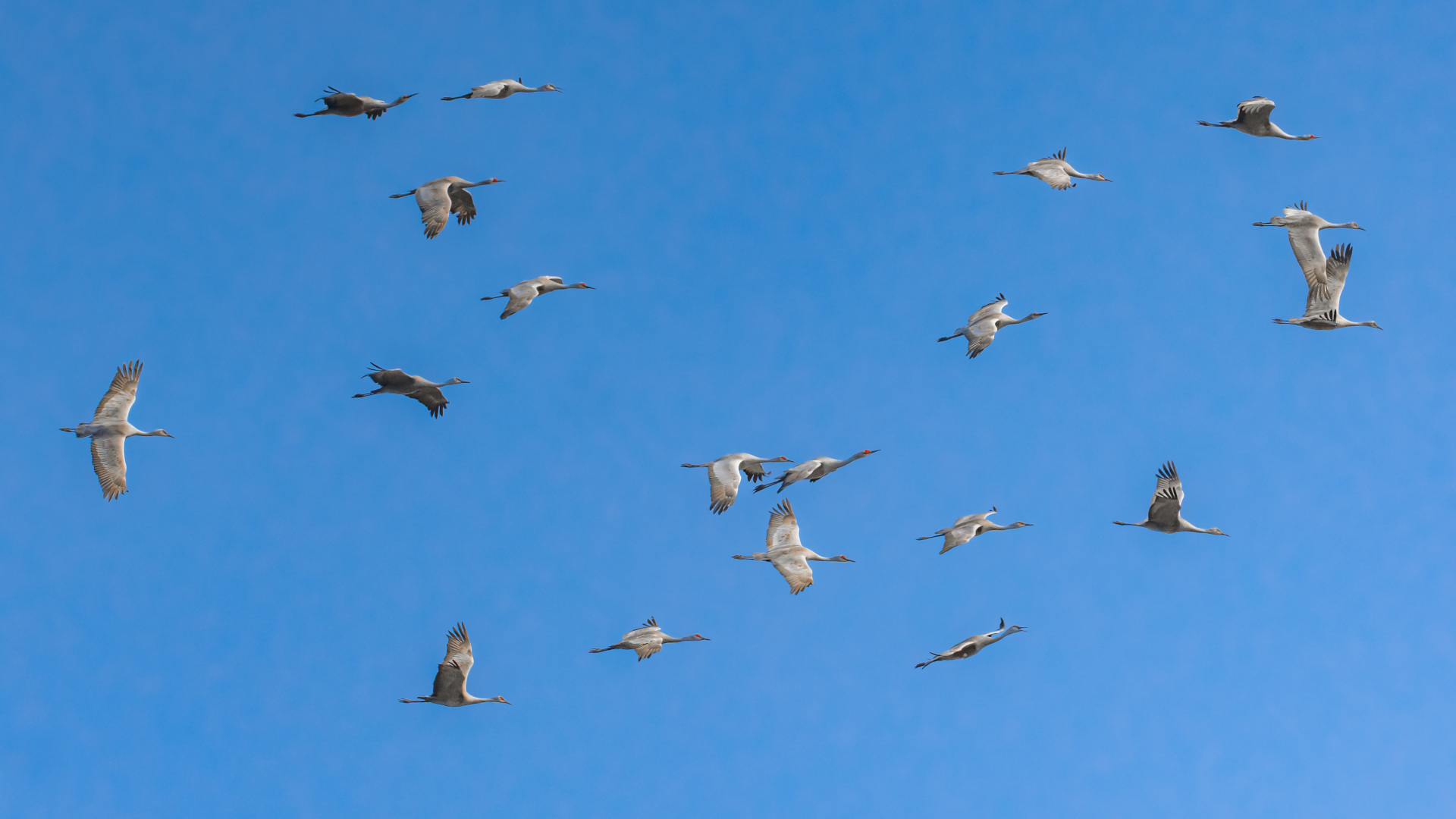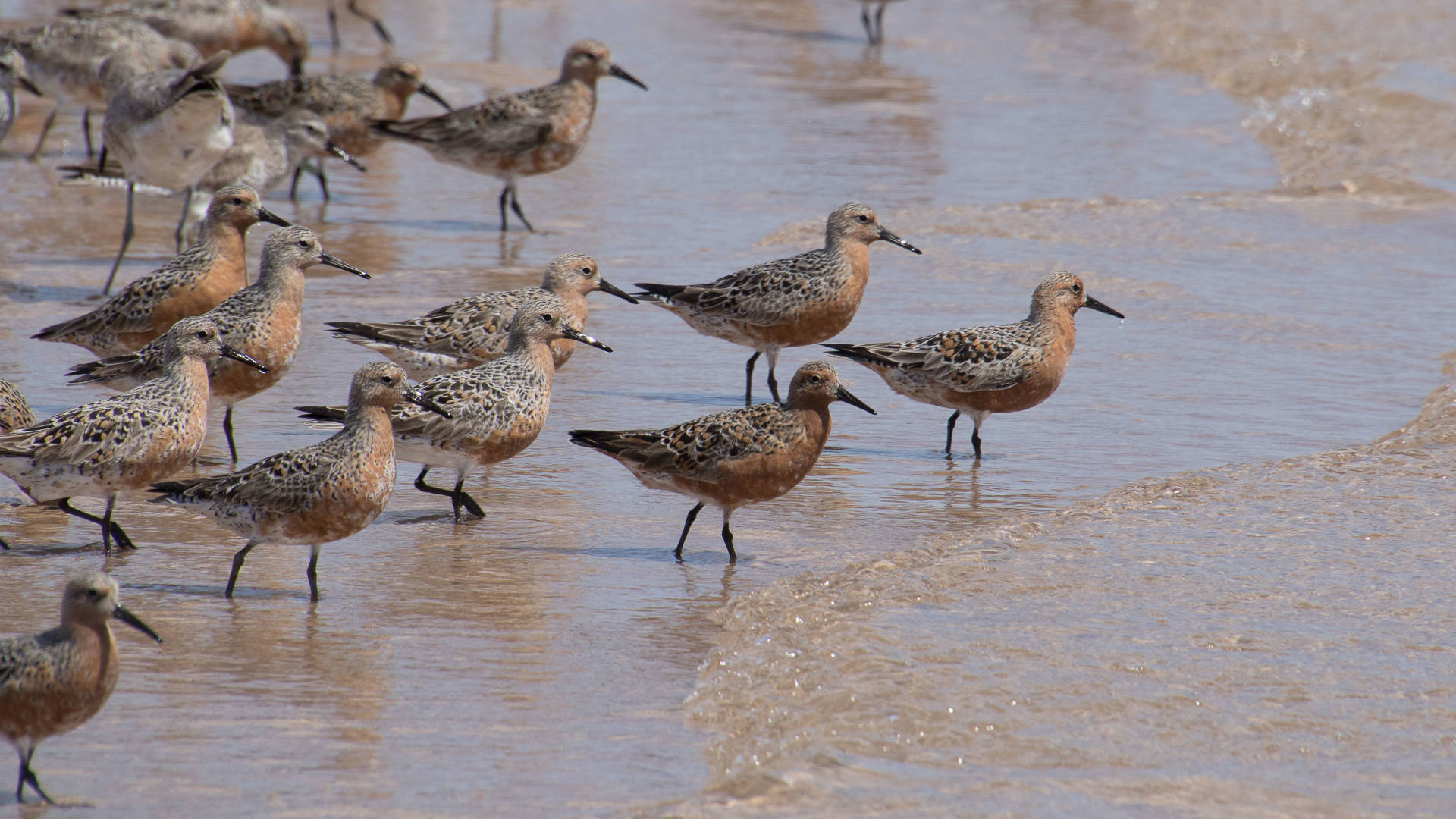Migratory Birds Need Habitat. California Farmers Can Help.
Every July, the western sandpiper, a dun-colored, long-beaked bird, leaves the shores of Alaska and migrates south. It may fly as far as the coast of Peru, where it spends several months before making the return trip. Western sandpipers travel along the Pacific Flyway, a strip of land that stretches along the Western coast of the Americas, from the Arctic down to Patagonia. The wetlands of California’s Central Valley offer sandpipers and hundreds of other species a crucial place to rest and feed along the way. In September, at the peak of the southward migration season, tens of millions of birds stop there.
But intensive farming and development have destroyed 95 percent of the Central Valley’s wetlands, and as the wetlands have disappeared, the number of migrating birds has plummeted. Shorebirds like the western sandpiper, which dwell in seashores and estuaries, are particularly imperiled, declining by more than 33 percent since 1970.
In 2014, in the middle of a particularly punishing drought in California, a network of conservation organizations called the Migratory Bird Conservation Partnership tried a new strategy to help migrating birds: paying rice farmers to create “pop-up” habitat. The program, which is called BirdReturns and was initially funded by The Nature Conservancy, has since created tens of thousands of acres of temporary wetlands each year.
Rice farmers in the Central Valley flood their fields when the growing season ends, generally around November, and keep them flooded until February to help the leftover vegetation decompose. They plant their crop after the fields dry out in late spring. The program pays rice farmers in the birds’ flight path to flood their fields a bit earlier in the fall and leave them flooded later in the spring. This creates habitat when the migratory birds need it the most, as they fly southward in the late summer and early fall and pass through again on their way north in the spring.
Daniel Karp, a researcher at University of California, Davis who studies conservation in working landscapes and is not involved in BirdReturns, sees the program as a rare conservation win. Most of the time, small farms that grow many different crops, and plant hedgerows and pollinator-friendly flowers are the best way to conserve biodiversity in human-dominated landscapes. But although rice farmers grow only one crop, their large fields are an exception. While it’s far from a complete solution, “it’s this weird rare circumstance where you have a large industrial-scale intensive agricultural system that can simultaneously support wildlife,” Karp said.
Over the last nine years, BirdReturns has created 120,000 acres of bird habitat.
To figure out where these surrogate habitats are most needed, BirdReturns uses data from eBird — a community science project composed of birders’ recorded sightings — to assess where and when migratory birds typically land in the Central Valley. Researchers combine that information with satellite data showing when and where surface water is most available, and where it’s needed.
BirdReturns is not like traditional conservation schemes in which organizations buy land and protect it in perpetuity. Instead, it’s a market-based program that pays farmers to flood their farms for a certain amount of time, rather like renting bird habitat, explained Julia Barfield, a program manager for The Nature Conservatory and part of BirdReturns.
The amount of money that farmers receive is determined by a reverse auction: The farmers bid for leases, and the lowest bidder wins. The payment increases according to how late or early they flood their fields, which cuts into the growing season. Preliminary data from studies from Karp’s lab suggests that the birds might benefit farmers in more direct ways, too, by helping to break down the leftover vegetation.
BirdReturns started with just 10,000 acres in the Sacramento Valley. In 2021, it expanded to the San Joaquin Valley Delta. The program now has a network of regional partners who lead their own reverse auction programs, such as the similar Bid4Birds, piloted by the California Ricelands Waterbird Foundation.
Over the last nine years, BirdReturns has created 120,000 acres of bird habitat. Though it’s a far cry from the 4 million acres of wetlands present before colonial settlement, studies have shown that shorebird density is 2 to 3.5 times greater in pop-up wetlands than in other rice fields. And BirdReturns is fine-tuning its approach based on data, feedback from farmers, and ongoing research: A study published in early September analyzing nearly 9,000 field observations over five years gave scientists more information about the factors that create good shorebird habitat. For example, more shorebirds tend to visit fields where the water is shallow, especially if they’re flooded consistently, for months at a time as well as year after year.
BirdReturns also has the flexibility to adapt as conditions change from year to year. During droughts, for example, the program prioritizes places that birds have visited in the past. In wetter years, it might scale back. “The findings of your results are applied right away to on-the-ground actions,” said Greg Golet, senior scientist for The Nature Conservancy, who is involved in the program.
There’s still the question of how this practice can continue sustainably, especially as climate change-fueled drought makes water increasingly scarce.
Challenges remain, though. The migration and agriculture cycles are not fully synchronized, making it difficult for rice farmers to flood their land early enough to create habitat for shorebirds, especially the long-distance migrants that might appear as early as July. BirdReturns has recently tackled other strategies, partnering with tomato farmers, who grow crops a bit earlier in the year and thus can flood their fields earlier.
And there’s still the question of how this practice can continue sustainably, especially as climate change-fueled drought makes water increasingly scarce, Karp said. In drought years, it’s costly to pay farmers to keep their lands flooded, if they have any water to spare at all. There’s no simple solution or easy answers, but for now, BirdReturns and similar programs are coming up with “creative solutions,” Karp said. “We thought we could rely on protected areas to conserve habitat globally, and we now know that’s not enough, and we need to complement that with a suite of different conservation strategies,” said Natalia Ocampo-Peñuela, a conservation ecologist at University of California, Santa Cruz, who is not involved with BirdReturns. While market-based solutions shouldn’t be the only answer, she said, they are “a piece of the puzzle.”
Natalia Mesa is an editorial fellow for High Country News reporting on science, and environmental and social justice.
This article first appeared on High Country News and is republished here under a Creative Commons license.











